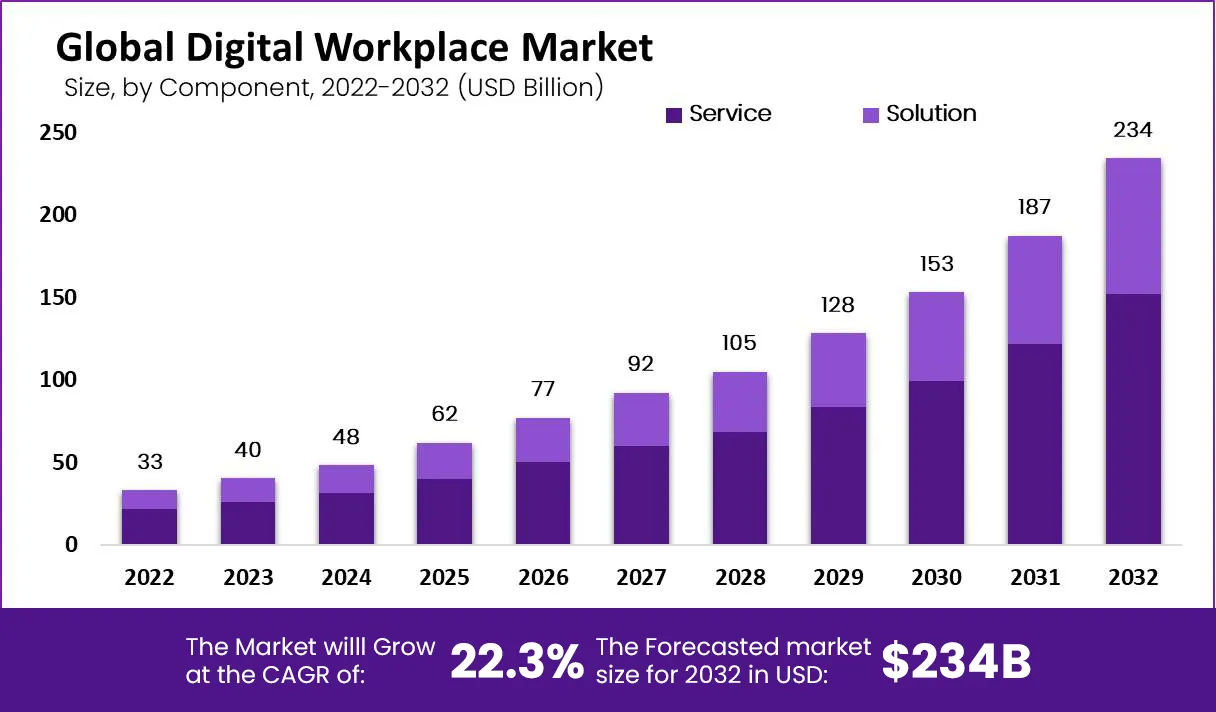Enabling Companies to Evolve: ISVs’ Journey from Digitization Enablers to Digital Natives
Blog: Indium Software - Big Data
The transformation to a digital workplace is no longer a trend or a luxury, it has become a necessity for companies to survive and succeed. Research from leading firms indicates that industries are grappling with this transition. In the BFSI sector, for instance, traditional banks are facing fierce competition from fintech disruptors, compelling them to revamp their operations and customer experiences to match the expectations of digitally savvy customers. According to a recent study by Deloitte, 56% of banking executives believe that their industry will be disrupted by digital technologies in the near future.
Global research and digital transformation over the predicted period, market size is anticipated to increase steadily, with a CAGR of 21.1% between 2022 and 2027. However, it is anticipated that spending in the digital transformation sector will rise from $594.5 billion in 2022 to $1548.9 billion by the end of 2027.
However, according to various projections by IDC and the global digital workplace industry, the market will be worth USD 33 billion in 2022 and USD 234 billion by 2032. Numerous variables, such as the rising popularity of mobile devices, the growing demand for productivity and collaboration, and the expanding usage of cloud computing are all contributing to this expansion.

The New Normal: ISVs at the Forefront
Why is it beneficial to ISVs?
Independent software vendors (ISVs) stand to gain a great deal from the growth of the digital workplace. By providing solutions that help businesses to digitize their workplaces, ISVs can tap into a large and growing market. In addition, the digital workplace provides ISVs with a number of other opportunities. For example, ISVs can use the digital workplace to:

Collaborative synergy
Collaboration is essential in today’s workplace. By collaborating with each other, employees can share ideas, solve problems, and get work done more quickly and efficiently. ISVs can leverage collaboration to build strong relationships with industry players, co-create solutions, and deliver superior outcomes. By fostering partnerships and open lines of communication, ISVs can gain valuable insights into industry trends, challenges, and emerging opportunities. Collaboration can lead to the development of innovative products and services that meet the evolving needs of industries.
The digital workplace provides a number of tools and technologies that can help to improve collaboration. For example, instant messaging, video conferencing, and shared workspaces can all be used to facilitate collaboration.
Digital Dexterity
Digital work practices are essential for industries to maximize their potential in the digital age. Embracing technologies such as cloud computing, artificial intelligence, and automation can revolutionize processes, enhance productivity, and improve efficiency. Research conducted by McKinsey reveals that adopting digital work practices can boost productivity by up to 25% in industries like manufacturing. By streamlining operations, minimizing manual intervention, and optimizing workflows, businesses can reduce costs and accelerate time to market.
Driven Dynamo
One of the key benefits of becoming digital natives is the potential for increased team productivity. Digital tools and platforms enable seamless collaboration, communication, and knowledge sharing across geographies and departments. According to a study by Gartner, organizations that promote digital work practices experience a 25% increase in team performance. By empowering employees with the right technology and fostering a culture of digital fluency, businesses can unlock the full potential of their workforce.
For example, the digital workplace can make it easier for employees to share files, collaborate on projects, and communicate with each other. This can lead to a more efficient and productive workflow.
Agile Launch
The digital workplace can also help to reduce time to market, speed is of the essence. Industries need to deliver products and services to market quickly to stay ahead of the competition. By embracing digital transformation, businesses can significantly reduce time to market. Research from IDC reveals that digitally transformed organizations have a 40% faster time to market than their less digitally mature counterparts. ISVs can play a pivotal role in enabling this agility by providing cutting-edge solutions and tools that facilitate rapid innovation and product development.
For example, the digital workplace can provide businesses with access to cloud-based development tools and resources. This can help businesses to develop new products and services more quickly and efficiently.
Key Takeaways:
- The Services segment, which accounts for 65% of the market, dominates according to the component analysis.
- The major enterprise segment controls a 63% market share, according to an examination of enterprise size.
- With a 24% market share, IT and Telecom are the market leaders according to the End-User research.
- APAC is anticipated to develop at a faster rate due to inexpensive costs, rising medical tourism, as well as hospitals and clinics, among other factors.
- In 2023, North America held the greatest revenue share of 35% and led the market.
Wrapping Up
The capstone of my argument is that the digital workplace is an inevitable trend that is transforming the way businesses operate. ISVs that can provide solutions that help businesses to digitize their workplaces will be well-positioned to succeed in this growing market.
The post Enabling Companies to Evolve: ISVs’ Journey from Digitization Enablers to Digital Natives appeared first on IndiumSoftware.